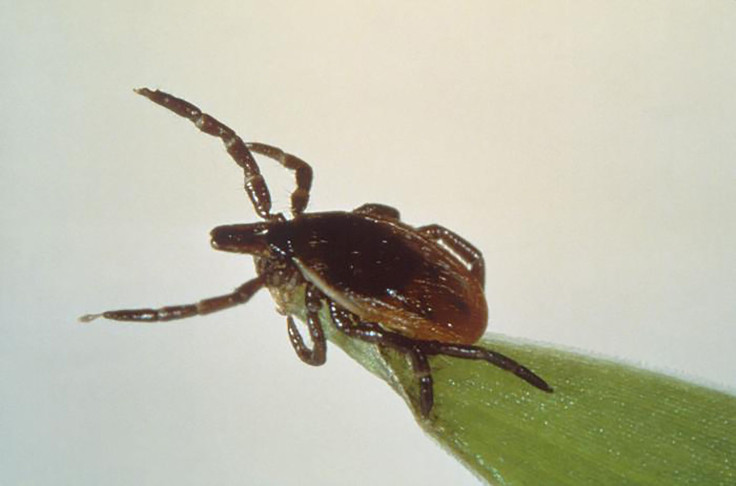Tick Bite On Neck Leaves Woman Paralyzed, Lyme Disease Diagnosed

A 43-year-old mother was left paralyzed after a tick bit her while she was in her garden. Rachel Foulkes-Davies was unable to speak and forced to eat through a straw.
A few days after being bitten by the tick, Foulkes-Davies' lip turned numb and her face started to droop. Doctors initially diagnosed her with Bell's palsy and gave her a course of steroids. But despite the medication, the mother-of-three did not recover.
The woman from Denbighshire, North Wales, described her ordeal as being like the "worst hangover in the world." As days passed, Foulkes-Davies slowly lost her ability to speak and had to wear an eye patch for half a year.
She was later diagnosed with Lyme disease and doctors ruled out any bacterial infection.
Speaking for the first time since her ordeal in June 2015, Foulkes-Davies said she was left feeling suicidal.
"The facial paralysis started with my lip going numb a few days after the bite... Then over the course of seven to eight months my ability to speak worsened," she said. "I couldn't talk for two years I was just living off a soups and stews and had to have them through a straw. The same went for hot drinks."
"My face still droops when I'm tired or even if I can manage a wine and my eye twitches and squashes in when I eat. I'm very self conscious. It's like having the worst hangover in the world as all you want to do is lie down. I would collapse on the sofa after work having looked after dementia patients for eight and a half hours without a break. I was drained," she added.
Tick-borne diseases like the Lyme disease are on the rise during summer.
Early signs and symptoms of Lyme disease include fever, chills, headache, fatigue, muscle and joint pain, and swollen lymph nodes. Severe symptoms include neck stiffness, rashes on areas of the body, arthritis with severe joint pain and swelling, particularly in the knees, heart palpitation or an irregular heartbeat, inflammation of the brain and spinal cord and numbness, or tingling in the hands or feet.
There is no vaccine for Lyme disease but following the below measures could help reduce the risk of infection.
1. Wear long clothing that covers the skin when out — consider tucking trousers into socks.
2. Keep to footpaths and avoid long grass
3. Wear light colors so it is easier to spot a tick on the clothes
4. Use insect repellent on exposed skin
5. Inspect the skin for ticks
6. Check pets for ticks
7. Remove ticks promptly or properly
8. Bathe or shower as soon as possible after coming indoors
9. Avoid wooded and brushy areas
© Copyright IBTimes 2024. All rights reserved.




















